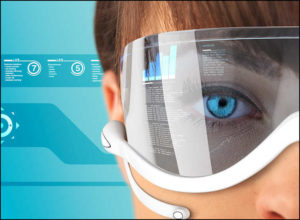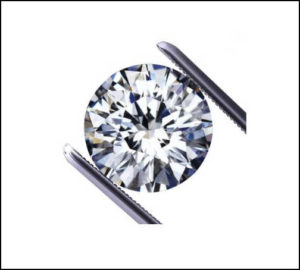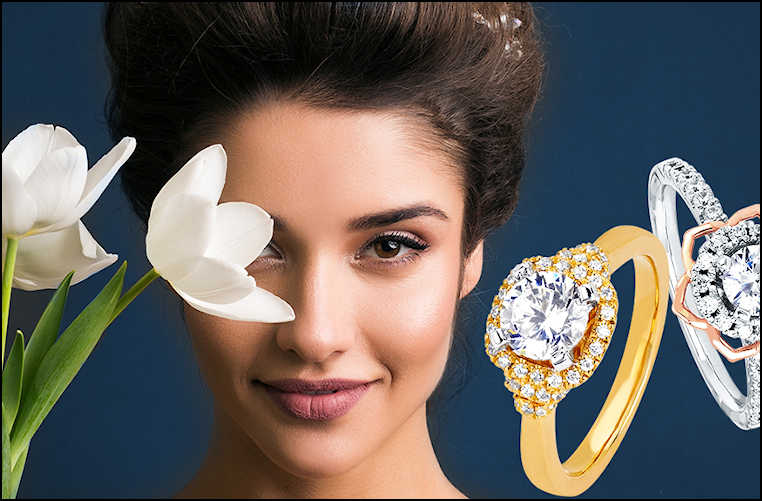Jewelry Ripe for AR-Powered Shopping Experience
Retailers and other companies are using augmented reality (AR) to promote products and services, launch novel marketing campaigns, and collect unique user data.
AR has been further integrated into our everyday lives over the last few years. Whether it’s through the ability to stage houses using a brand’s furniture or virtually try on a diamond ring, AR is expanding through many industries to help customers visualize a product before they make a purchase.
In a recent article in Forbes, the business magazine’s Agency Council expert marketing panel discussed fields it believes are ripe for AR-powered shopping experiences, with jewelry among the top 10.
“One of the biggest strengths of augmented reality in shopping is allowing the audience to visualize products and this is where certain industries really need to take note, with items such as jewelry a prime example,” shares Lisa Montenegro for Digital Marketing Experts – DMX Marketing. “AR technology can help potential customers see what certain items would look like on them, helping better persuade them to purchase.”

AR is an enhanced version of the real physical world achieved through the use of digital visual elements, sound, or other sensory stimuli, and delivered through technology. Unlike virtual reality (VR), which creates its own cyber environment, augmented reality adds to the existing world as it is.
The State of Fashion 2021 report, by the Business of Fashion and McKinsey & Company, are seeing brands rethinking store formats and leveraging data and analytics to predict everything from footfall (the number of people entering a store or shopping area in a given time) to manage assortments and build personalized offerings. Flagship stores, it forecasts, will be branded as discovery zones and tasked with creating emotional connections with customers.
The study expects consumers will rewrite their own codes of engagement in 2022, seeking to actively balance their physical, digital and virtual spaces by merging platforms, allowing brands to re-purpose experiences.
Other studies support the data. GlobalNewswire research forecasts the global AR market will be worth more than $88 billion by 2026, increasing over 31% from 2021. There will be more than 1.7 billion mobile augmented reality users all around the world by 2024.
ThinkMobiles finds 61% of consumers prefer retailers that use AR features, and 45% say AR tools helped them to decide on a purchase quicker. This is what makes augmented reality a perfect business tool to engage with more leads in the jewelry business.
Smart Retailing
It’s no wonder that jewelers attending the JCK Las Vegas Show in June were crowding around the booths of tech companies offering the latest tools to connect the digital and real worlds in the shopping experience. In The Plumb Club Pavilion two such companies in the group’s Retail Innovation section, Picup Media and Glass-Media, provide some great examples of the compelling technology available.
Picup Media — a company that provides visual tools for smart retailing in the digital experience economy — showcased its range of products including its pioneering smart phone GemLightbox for jewelry and gemstones; augmented intelligence (AI)-powered jewelry image retouching tool; and AR jewelry virtual try-on software. The first augmented reality platform made for jewelers Picup Media developed its Jewelry Hub as an extension of the GemLightbox app.

The Hub allows jewelers to effortlessly embed a TRY NOW button on their product listings. When customers click it, a pop-up appears that begins the virtual try-on experience. Also, all files from the GemLightbox app are automatically synced to the gallery of the Jewelry Hub, allowing for seamless collaboration among teams that can access files anytime, anywhere. Photo retouching, catalog making, and AI-powered jewelry description writing tools also are included.
Glass-Media — a group of visual storytellers, engineers and retail strategists passionate about movement, technology and design — presented cutting-edge digital display elements for jewelry stores, including 3D holograms, projection-based illumination, display-based pixel mapping, wireless charging, digital point-of-sale displays, and other custom visual solutions that re-imagine retail.
“Our passion for innovation inspired us to develop a new way of approaching experiential marketing in the offline world,” tells Mohib Ali, business solutions manager. “We offer user-friendly digital programs, comprehensively designed from infrastructure to interface, with complete control from anywhere.”
The lack of high-quality projection films on the market led Glass-Media to create its own glass cling technology. Its paper-thin, semi-permanent projection film offers unmatched clarity, color uniformity, and ultra-wide viewing angles, transforming static imagery into dynamic digital displays.
Visualizing the Possibilities
Technology can help consumer concerns and ease purchase decisions by building confidence and demonstrating what pieces look like from various angles, and how they will look when worn, shares Brian Howard, vice president of sales and marketing for Shah Luxury in a Plumb Club podcast. In fact, the importance of these tools for retailers led Shah, a diamond bridal and custom jewelry manufacturer, to also become an IT developer.
 “We needed to bring the technology to our customers to make business more effective, efficient and engaging at retail,” says Howard. Shah’s virtual try-on application, for example, allows customers to visualize a piece of jewelry on, using an existing product image or design rendering. “You can scale it up or down, rotate it, it’s like new age technology of photo-shopping the jewelry on.” And customers can save images and instantly share with friends and family.
“We needed to bring the technology to our customers to make business more effective, efficient and engaging at retail,” says Howard. Shah’s virtual try-on application, for example, allows customers to visualize a piece of jewelry on, using an existing product image or design rendering. “You can scale it up or down, rotate it, it’s like new age technology of photo-shopping the jewelry on.” And customers can save images and instantly share with friends and family.
Hologram technology today, Howard shares, offers 3D, ultra-HD, and virtual reality that brings jewelry to life. “Using a hologram machine or box, even a smart phone or tablet, customers can view, in midair, a piece from every angle, 360-degrees, and in full color.
What’s more, you can change metal color or gemstone in the design as it floats before you.” He cites sales conversion rates for jewelers using the technology to be 30% to 40%.
Moreover, Shah Luxury in its “As You Wish” program provides a digital storybook documenting the journey of a custom design. “We take a picture of their exact piece during every step of the process,” tells Howard. “Customers can follow along in pictures and details recorded on a card that features a scan code to instantly pull up their story online. We want customers to see their idea come to life so they can be a part of it and share it with anyone they like.”








